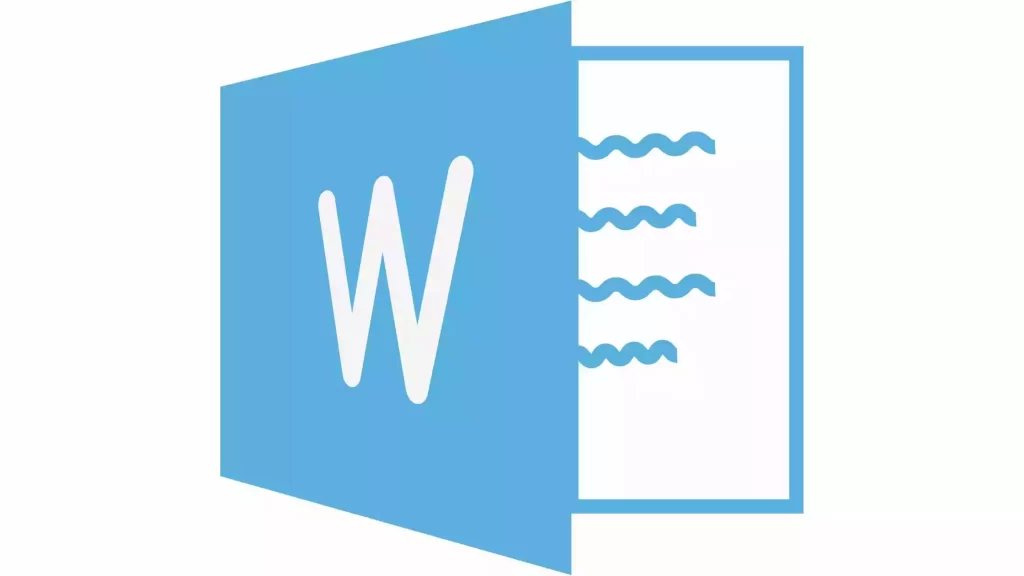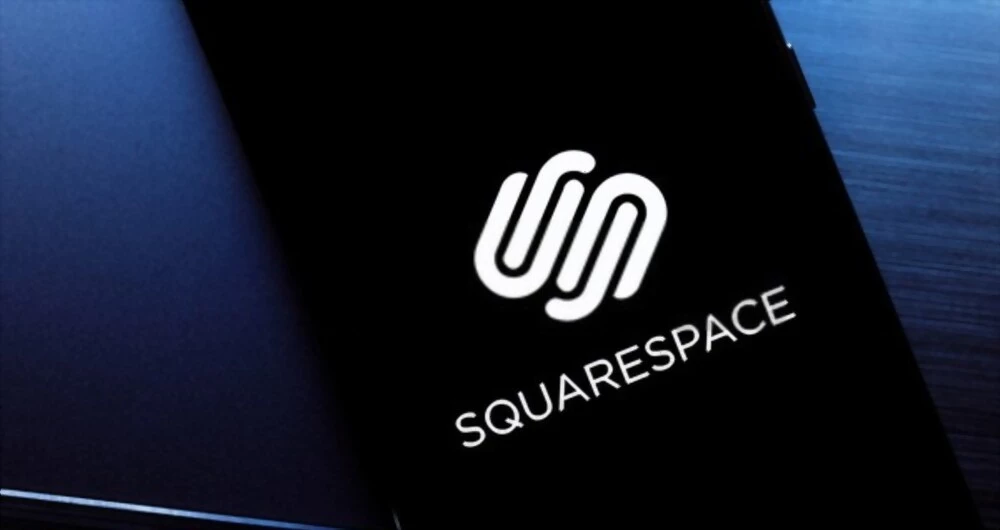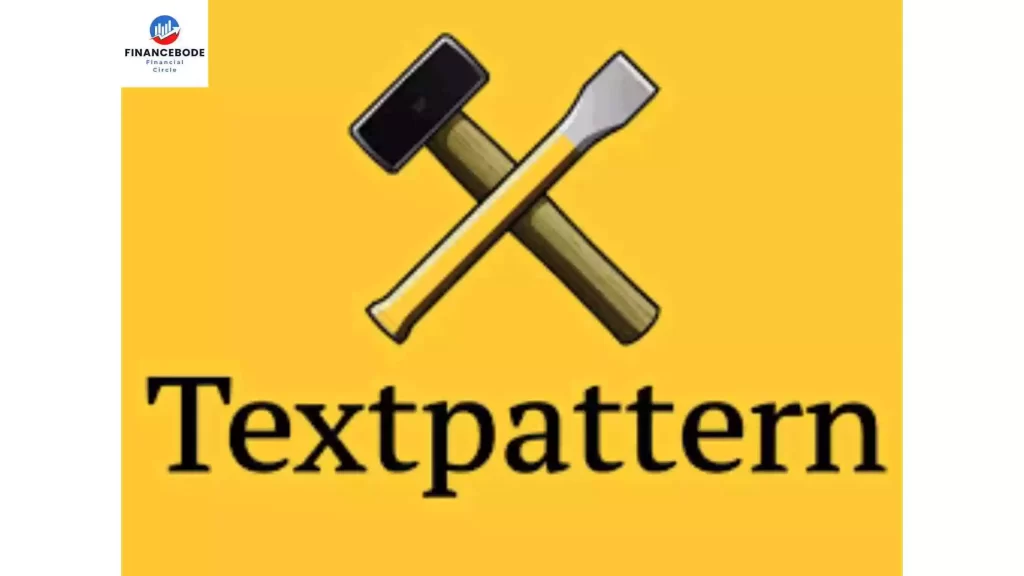Where to blog in 2023? What is the best blogging platform? These are the essential questions that a beginner has to address before establishing a blog.
Without further ado, the following are the most effective blogging platforms:
- Wix,
- WordPress,
- Squarespace,
- Medium
Is everything else nonsense?
Yes.
The article is extensive, so stock up on cookies and tea.
In addition to platforms, we’ll also talk about how a beginner may independently advertise his blog and monetize content.
Let’s get started.
What are blogging platforms, and why are they needed?
Blog platforms are services that enable the opportunity to develop content initiatives. There are many different blogging platforms available. However, they all focus on the same issue: how to launch an information resource quickly.
Experienced web admins frequently construct content sites from scratch based on one of the primary content management systems. But for newbie bloggers without an understanding of site development, blog platforms are perfect, which considerably minimize the amount of regular labor.
All that needs to be done at the outset is to identify a niche, establish the target audience and think through monetization strategies. All tasks on the technical side are closed using built-in tools.
One of the primary drawbacks of services is the requirement to obey the regulations. If you build a blog based on a constructor or a blog platform, you might be banned for breaking the conditions of use. It is best not to tolerate such scenarios in order not to lose your site and reputation in search engines.
What Is A Blog, And How Does It Work? What You Need To Know
What is the best blogging platform?
Popular blogging platforms close all user duties, but if you require total freedom of action, it is best to use one of the ready-made engines with vast possibilities. Ideally, the CMS has an established infrastructure and a broad community.
Choosing a popular engine can shorten the search for a developer. If the blog runs based on a CMS that has not been updated for many years, it will be tough to locate a coder. You will also have to address security vulnerabilities to secure the site from hackers.
The most popular CMS is good for producing blogs but will still contain additional features that cannot be turned off. This is not a downside. However, it might be tough to use the admin area at first.
Guess what the best platform can be:
Wix

Blogging with Wix provides novices a method to make their blogs appear as the experts made them without the need to learn coding or web programming.
Our user panel awarded it good ratings for its simplicity, complementing the platform for its ease of use and shallow learning curve.
One user told me, “I believe it’s as essential as it can be for someone with no technical expertise. “
They constructed their site with ease without falling across any constraining limits.
Another customer dubbed the drag-and-drop editor’s straightforward user interface and its options for building personalized layouts and layouts.
We got in and tested it out ourselves and discovered that they were correct. You can build a blog in just a few minutes. Wix even helps you through the whole procedure step by step if you need it.
They provide hundreds of templates in many different categories of websites. For example, they offer themes for vacation blogs, essential portfolios, or photographic galleries. We enjoy that you don’t need technical skills to change materials and build your desired blog.
Another user agreed that Wix provided an effortless blogging experience, adding: “If I’m not sure about a given issue, it’s fast to locate it via their support.”
Wix provides live assistance through a 24/7 callback service (if you’re in the US) and a vast knowledge library with articles to aid newbies when they’re stuck.
But you can also let Wix’s ADI builder do much of the hard work. This program uses artificial intelligence to help you construct the precise website you want simply by answering a few questions.
Blogging with Wix
The Wix blog management is straightforward and intuitive, with built-in metrics and SEO. It’s also simple to add the fundamental features you would want on your blog: things like social features, likes, comments, hashtags, categories, and subscription forms.
There is a blog template category, which is an excellent place to start. Once you’ve picked your design, I advise modifying the font, colors, and logo to customize your template and make it stand out from the others.
Writing a post is as easy as selecting Create a Post, writing your prose, and attaching photos. You may save drafts or even grant other contributors writing abilities for your site. This is just as simple on a mobile device as on a desktop, with no app necessary.
Overall, the blogging process is as straightforward and easy to use as many have stated, but a few unexpected things also surprised me.
You may utilize various SEO elements, from alt tags for your photos and internal links to SEO titles and descriptions (which are different from your article title) and nofollow tags for external links.
Having that out of the box is beneficial without adding additional plugins or widgets. Adjust your SEO settings for each article because this is visible in search results and is essential for ranking naturally.
The final post will include a read time count to indicate to readers how long it will take to evaluate your content (something Medium already provides) and is an excellent tool for readers.
We also enjoy utilizing live chat to communicate with your readers via the Wix app. If you develop a true community on your blog or are willing to address queries from readers in real-time, say about an online course you’re providing or an upcoming webinar, then it’s a terrific feature.
We also saw how most Wix blogs tended to appear fantastic on the mobile, tablet, and desktop, which our users claimed helped them attract readers. “Since my website works excellently on any device,” stated one user, “it made it simple for an audience to explore my work and contact me immediately.”
Cons of Blogging with Wix
There are certainly negatives to Wix, but even from our user panel, it looked like their biggest criticisms were distilled down to a few issues.
For example, the platform often doesn’t play well with mobile if you attempt to perform more ambitious scrolling layouts, like parallax scrolling. One customer claimed that “my hover effect cannot be done on mobile; therefore, I had to develop a simplified version [of my website] separately.”
There’s also the problem of the monthly price, which, although reasonably inexpensive, can cause some emerging bloggers to squirm (mainly if you aim to be more bootstrap) (especially if you plan to be more bootstrap). If you want to earn any of that money back with your eCommerce capabilities, you’ll still have to consider paying for a more costly plan for that feature.
The user panel ranked Wix relatively poorly on monetization, but that’s not to imply it can’t be done. Wix may showcase featured blogs utilizing its platform from time to time, which might lead to new chances, as was the case with one of our customers.
“Being highlighted on Wix provided me a couple freelancing jobs, finally providing me my full-time employment,” they stated.
Ultimately, we conclude that despite the negatives, Wix is worth paying given the platform’s simplicity of use and out-of-the-box blogging tools.
Why We Rank It #1
Wix provides the best blogging platform for most people coming to this Page (i.e., beginner bloggers). That’s why we put it number one: simplicity of use is such an essential aspect for people just starting that we awarded it a top place for that alone.
It offers a huge selection of themes appropriate for any blog or website you want to create. With no coding knowledge, You can alter the aesthetics of those themes to give your blog the authentic look you want.
Users we talked to commended Wix’s simplicity and the opportunity to personalize their blogs on the site. Our actual investigation validated this. We could develop a beautiful blog with minimal Wix expertise in minutes. Imagine what you could accomplish with extra time.
You can even let Wix handle it by answering a few questions and letting its strong AI control the rest if you want to remove the uncertainty from creating your website.
Bottom line: We strongly suggest Wix for new bloggers who want to establish a fantastic-looking blog effortlessly. Even seasoned website builders will realize that there is a lot to be learned from Wix. And with capabilities like its Wix eCommerce and email marketing capability, you can expand and mold your website to maximize things like profit and audience growth.
WordPress

WordPress is among the most popular blogging systems, and for a good reason.
It is a highly adaptable content management system (CMS) for bloggers who wish to develop a site for their company. It’s also excellent if you aim to grow your blog for business.
The reason? WordPress is open source. That indicates they don’t keep their source code a secret. Developers can go in and add widgets, plugins, and other tools to personalize WordPress blogs, so you can create whatever style of blog you desire.
One user on our panel, who has been staying with WordPress for four years, characterizes the CMS as “blogger friendly” with numerous SEO capabilities built in. His experience is mirrored by many of our other users.
Nevertheless, there is a slight learning curve. You must take a more active role in choosing your plugins and widgets and managing the backend if you want to customize WordPress to its fullest potential.
You’ll probably have to mess around with Html, CSS, and light coding.
However, even though this is relatively basic with WordPress, it didn’t take long to construct a blog for our users to learn the ropes.
One customer said, ” WordPress was a bit of a high learning curve for me since I had no prior experience, but I figured it all out pretty quickly. “. “WordPress is intuitive, and if you can’t figure anything out, simply Google it or check out YouTube, and you’ll usually find an explanation.”
Another expressed a similar opinion. However, after using the platform for a few days to blog, they added that “it’s easy to use.”
The trade-off is worth it, as you may have an excellent website tailored to your specific preferences. That makes it perfect for constructing a website for audience and earnings development.
Users could also market things to third parties to gain even more cash. “I was able to monetize my blog via affiliate marketing, coupled with info products like ebooks and minicourses after my readership became large enough,” they stated.
They were also able to make use of plugins to assist them in developing their audience and generating revenue growth.
“One thing that helped with that was developing an email subscriber list and newsletter using the Mailchimp plugin,” they said. “It is necessary if you genuinely want to monetize your blog.”
And, as your blog and readership develop, you can continue to change your site to accommodate that growth in the direction you want to go.
Blogging with WordPress
Confession time: WordPress is the CMS we use here at Financebode, so we’re slightly prejudiced.
In truth, we are pretty prejudiced.
Suppose you aim to establish a blog that will attract thousands or even millions of visitors, let alone monetize it. In that case, we can’t suggest WordPress strongly enough… however the user panel is actual when they say it’s a bit hard to learn at first.
Read our complete guide on “22 Best Blogging Tools.”
At first appearance, the blog dashboard for WordPress appears more difficult than others. But once you join in, it’s pretty simple to wrap your head around.
The platform just debuted its Gutenberg editor, which may make the editing process more accessible. They give everything you need to blog in a pretty natural and easy-to-understand approach.
I’ve used this new editor previously, and I appreciate how you can move various components of your blog posts and pages to where you’d want them to be in the final published version. The layout is incredibly straightforward to modify, and locating things like font settings and picture inserts is a joy.
Sure, it’s not the pretty drag-and-drop capabilities like Wix and Squarespace because you can’t alter the entire Page, but it’s relatively close.
I have also found WordPress to be highly scalable. No matter what you want to develop or how large you are, the platform will expand with you as long as you pick the proper plugins.
Quick Tip for Creating a Blog: Don’t make the novice error of downloading a LOT of plugins and widgets. It’s tempting to believe that you need everything and the kitchen sink to make your blog unique, but sometimes less is more.
Also, adding a handful of plugins is a simple method to slow down your website load time.
One plugin that we suggest is the Yoast SEO plugin. With a few simple steps, this viral WordPress plugin helps you set up your articles to be as SEO-friendly as possible. Honestly, it’s a must if you’re using WordPress.
And if you truly want, you can start modifying the code yourself. Since WordPress is open source, you can do anything you want with it. If you know PHP or are ready to employ a developer, you can customize WordPress any way you like.
One user stated best: “WordPress offered me everything I needed to develop the blog I desired. It provided me a simple interface to post my blogs and everything I required or wanted on my blog: a subscription box, an author section, exactly the style I wanted, and the ability to alter things up as needed.”
Choose a Host
To develop your site using WordPress, you must acquire a domain name, obtain web hosting, and set up your account.
Additional details on choosing a managed host optimized for WordPress can be found in our blogs on the best web hosting for WordPress. Choose Bluehost is the quick response.
Bluehost is not just one of the most popular web servers but also WordPress-ready. They even promote choosing Bluehost as a hosting alternative.
With just one click, you’ll be up and running with your WordPress site in minutes. One customer noted, “It’s more straightforward if you opt for the one-click WordPress install and buy your domain name via them too. “
Our panel of customers utilized this precise combination of WordPress and Bluehost to develop their websites.
“For four years, I still use Bluehost for most of my sites,” commented one consumer. “It’s perfect for novices because of how the price scheme is organized.”
That’s true. Bluehost’s price is mainly intended to entice new customers beginning at only $2.75 per month. That’s inexpensive when it comes to web hosting.
I’ve joined up with Bluehost using this deal and was astonished at how much they supplied for the price, including 24/7 customer assistance, one-click WordPress installation, and a free name.
Bluehost is also ideal if you transfer or switch from another hosting provider.
One consumer praised the simple and painless host conversion procedure adding, “Website migration was wonderfully easy! And I enjoy the portal on Bluehost compared to the former location. Moreover, the support is better for me.”
They also offer an outstanding customer support service accessible through chat, email, or phone if any troubles occur.
“I once had a situation where my website crashed,” said another WordPress user I talked to, “and I called their chat help, and they were able to identify the problem (a malfunctioning plugin) and solve it instantly. I’m extremely appreciative of that.”
Overall, Bluehost is the hosting provider you want to use if you start with WordPress. They operate together effortlessly, the price structure is quite reasonable, and you even get features like free domain registration. It’s a no-brainer.
Cons of Blogging using WordPress
The user panel provided me with additional remarks regarding the beginner-friendliness of WordPress. Some felt it was pretty simple, while others commented it’s challenging for newcomers.
“I don’t like how using it has a little bit of a learning curve,” stated one customer. His opinions demonstrated that WordPress would not be the simplest solution, particularly when developing your first site. “Sometimes I wish I had my hand more during the blog creation process instead of sifting through many YouTube how-to videos to discover how.”
After testing and constructing sites myself with WordPress, I can tell that it takes a little getting accustomed to, but once you do, you’ll be pleased to put the effort in.
But even if you feel uncomfortable at first, it’s still the best choice if you’re eager to learn and develop in the position of administering your website.
Another drawback that one of our surveyed users highlighted is that WordPress lacks extensive customer support.
“I wish there were a support desk you could contact through email or chat,” one customer informed us.
When I looked, I discovered that WordPress support was the equivalent of a help forum. After submitting a test question there, it took me around two hours before I received a response. While the reaction was informative and addressed the point I raised, it was still two hours, which may be a long time if there’s money at risk with your blog.
Why We Ranked It #2
If you want to create a site that will expand with you regardless of how big it becomes and score very high across all categories, WordPress with Bluehost is a terrific place to start.
This is particularly helpful if you want to monetize your blog and optimize it for traffic/growth. Eventually, you will need to add additional resources that other platforms may not be able to supply you. WordPress and Bluehost can achieve that.
Although the user panel experienced minor challenges with the platform’s learning curve, they all indicated they could design their perfect blog after they understood it. They particularly loved the degree of customization of WordPress, with several monetizing their websites utilizing the various plugins and widgets in the site builder.
Bottom line: creating a WordPress website requires more time than creating one using Wix. One. However, the price is that your website is considerably more flexible (and powerful) (and powerful). And Bluehost makes it simple to host your WordPress site. As such, we suggest this combo for bloggers who genuinely want to boost their traffic and profit margins.
Squarespace

Create a blog with better platforms with Squarespace – The first thing I notice every time I go into a Squarespace blog is how lovely it usually appears.
The photographs and graphic designs seem to leap off the screen. Blog owners always tend to be artistically inclined, like artists, photographers, graphic designers, home décor specialists, and more.
Our panel was no exception. They comprised a website design specialist who teaches readers how to make attractive sites, a gardening influencer who usually includes lush photographs of his cultivated veggies and an interior designer who loves to stretch the designs of his spaces in gallery pieces.
And there’s a reason everyone selected Squarespace as their platform.
The three graded Squarespace exceptionally well across the board. Each category earned no less than a four on average, and many users had lovely things to say about its simplicity of use and designs.
“I suppose I got my blog up and operating in a day,” claimed the interior design blog user. His site typically offers interesting images of eclectically built rooms. “Squarespace provides clean and elegant themes that you may simply change.”
My investigation of hundreds of Squarespace blogs backs up his assertions. Each of the templates on the site is designed by a team of excellent designers, and they all look gorgeous.
Blogging with Squarespace
From the contact page to the About Page to the home page to your portfolio to the actual blog, Squarespace makes it exceedingly easy to modify your blog. They provide a drag-and-drop feature like Wix. Users also don’t have to deal with a highly complex editor backend, which is another difference from WordPress.
One customer said they have a fantastic What You See Is What You Get constructor. “That alludes to the Page that is being created. You can see how it will look as you build it.”
Ann, another name for that user. She discovered Squarespace years ago and loved it so much that she made a successful career by assisting other people with their designs on the platform.
She feels Squarespace’s backend editor is preferable to WordPress’s since you can see changes as you make them.
Occasionally, like with WordPress, you must visit the front end to see your changes in action after making them on the back end. When you write a blog post on Squarespace, you can view the changes in real-time. And that, in my opinion, is beneficial. That is one element that adds to how simple it is to use.
Squarespace also enables you to add an ecommerce aspect to your blog and a newsletter connection. That may indeed help you expand and alter your blog for revenue and audience development.
Another user said, “Squarespace has quite a few tools built to develop your business the way you want, such as a store, integrated podcast support, a members area, and email marketing. Additionally, they have a ton of information on their website about each function and how to use it.
Cons of Using Squarespace for Blogging
Squarespace’s shortcomings, according to our user panel, can be summed up in one word: personalization.
While the platform provides options to add email marketing, eCommerce, and membership capabilities to your site, it’s still quite restricted when it comes to total flexibility compared to a CMS like WordPress.
“Custom CSS is only accessible with the Business Plan,” remarked one user. “It’s achievable for my website. I discovered some wonderful instructions on the Internet for more CSS customization and had to purchase a sidebar plugin since it wasn’t incorporated into my design. For more complicated websites, this might be a problem.”
While Ann is a Squarespace advocate, she feels she might be better regarding her mobile customization.
He says his students are most annoyed by the mobile editor. “Building a website with Squarespace takes time [on desktop], and then you have to build it again [for mobile] physically. Simply put, the process requires a lot more time.”
Another customer also had minor complaints with Squarespace’s intuitive noting, “It might be more evident what to perform certain things. Sometimes you have to seek and click here and there. I have mistakenly erased a blog repeatedly because I pressed the wrong button.”
Why We Rank It at #3
Squarespace scored on all measures, and our panel of users had great things to say about the platform’s awesome templates and general usability.
However, we finally deleted it from WordPress due to its poor customizability and scalability due to limited customization.
While Squarespace can be used to create an engaging blog with a respectable readership, most people may be turned off by the platform due to its limitations. Additionally, you cannot use resources like the Yoast SEO WordPress plugin. In addition to all of that, a premium fee is required to access custom CSS.
It will cost you a little more to leverage Squarespace’s ecommerce features, as you need to choose a more premium plan.
Bottom line: Squarespace provides great-looking themes, simple drag-and-drop layouts, and the ability to exhibit your art, images, and more. Give Squarespace a try now.

Blogging better platforms with LinkedIn provides you with a built-in audience for business professionals of various persuasions, from HR, digital marketing, finance, IT, and more.
Many people use the platform frequently, exchanging articles and thought leadership via their LinkedIn feed.
Therefore, the LinkedIn audience is your primary source of income if you’re interested in positioning yourself as a thought leader or influencer in your industry.
The platform offers a ready-made culture and expectations that a business blogger might dream of building on their site. Your goal is to develop magnetic, share-worthy material to grow a following.
After all, LinkedIn is a social network. Your impact rises in proportion to the size of your network. The more posts you write, the more connection requests and followers you attract.
It is a great way to find new customers and get quick feedback on your content from peers because it is a social network for professionals in your industry. You can make your thought leadership known to everyone, including recruiters, customers, and industry influencers.
And you may turn your audience into partners and customers.
“So far, I have experienced acquiring better quality customers on LinkedIn by blogging and publishing material on the platform,” stated one user I talked to.
It may seem painfully apparent, but not many people recognize that the platform may be highly profitable if you’re in business. People using LinkedIn tend to be top earners. They are executives. They are industry movers and shakers who desire to innovate and establish enduring enterprises.
And they’re prepared to pay a premium for the right individual to bring them there.
One user said, ” I can indirectly make 1,000 or so through LinkedIn every month if I try.”
Blogging on LinkedIn
Creating a blog on LinkedIn is incredibly straightforward and needs a profile. From there, it’s only a question of hitting a Facebook-like status button and generating an article.
Like Medium, LinkedIn has a Gutenberg-style editor that’s straightforward. Our panel also found it quite helpful, with one noting, “The article function is fairly straightforward to use. I add photographs, write the text and publish—and I’m done. No strange mismatches or formatting issues.”
It’s also worth mentioning that there are variations between a LinkedIn post and an article.
A post is a short update you would share with your feed and contacts. Think along the lines of a brief tale or career advice. They are restricted to 1,300 characters, which is around five lines.
The articles are more prolonged and more profound, of course. They are things that the larger LinkedIn audience would be interested in reading.
A person who reads your post may also follow you from there, so they will be informed when you write your next piece. Articles you upload will display in the Articles section of your LinkedIn profile.
Is one better than the other? It depends, of course. After all, you may have an excellent idea for a long-form essay that your readers would appreciate.
But, one of our panel users feels that the shorter, the better. As such, they propose avoiding producing articles entirely.
“Go all in for multimedia postings and brief status update messages,” urged one user. Please do not publish complete articles here. If you want to acquire a lot of traction, upload the correct content and find a method to shift that attention to items or services you can sell people on.”
Cons of Blogging on LinkedIn
While LinkedIn provides numerous chances to blog, grow your brand, and establish thought leadership, it lacks in certain crucial areas.
For one, there’s no simple method for visitors to view an archive of your earlier pieces like on Medium or a conventional Wix, Squarespace, or WordPress blog.
As a result, you must first click on your profile, then your activity feed, and finally scroll down to your writing because the article will continue to appear in your activity feed. That is a lot of work to put into finding just one piece.
“Not great discoverability for individuals who want to read my prior blog entries on LinkedIn, in my opinion,” remarked one user who chimed in on the absence of a newsletter function to help market their blog.
That individual also criticized blogging on LinkedIn, noting, “Articles typically have awful reach in the feed. Creating a true blog on LinkedIn, to me, is worthless.”
Why We Rank It #4
LinkedIn is a social networking website, first and foremost. Everything else comes secondary to that objective.
The same is true of your writing. Although it isn’t a platform for blogging in the traditional sense, it could be a helpful blogging tool for expanding your network and making connections.
And some of our users have earned a lot of money utilizing their blogs to build these relationships.
“LinkedIn gives me a side income. I have to post a blog entry. Then I have to put a link to a webinar in the comments. Some people sign up and later buy my course through the webinar, “the user said.
However, if blogging is all you want to do, it’s not a very efficient blogging platform. If that is your goal, we advise choosing any of the options above and promoting your blog by posting your articles on LinkedIn.
Bottom line: LinkedIn is a great blogging platform only if you’re using it to promote a platform you control, like your company website. You can’t monetize it directly and entirely depend on an algorithm for reach and engagement.
But if you’re blogging about business themes like management or marketing, LinkedIn is a terrific chance to build your network and readership. There is a pre-existing community of individuals that converse about specific issues and are eager to read your articles.
Medium

Medium is one of the most polarizing platforms for blogging and perhaps the most controversial on our list.
It is devoted to bloggers focusing on providing specialized content for viewers. It’s also where you may discover some of the most inflammatory and combustible information online.
What truly makes Medium stand out to authors like our user panel is its built-in networks of readers. People may explore your extensive collection of content, discover your blog, and subscribe to it with a simple click. You may also submit your writing to other publications to be featured in different media blogs.
Consequently, your material has an enormous ceiling for virality as long as it maintains consistency with the writing.
“It’s plug and puff and goes on,” one user told us. “Even if you have no writing skills and simply desire to write, it’s not hard to get started and acquire an audience.”
The potential to tap into a reader pool appealed to many users, particularly after their less-than-stellar experience on another platform on this list.
Creating a blog with Medium “I suggest not even beginning with a standard WordPress blog,” remarked one user. “Go with Medium since it functions as both a blogging tool and a social networking platform. Naturally, there will be a greater audience for individuals to read your work.”
Medium also allows you to earn paid directly from your blogs via the Medium Partner Program. This rewards author for their work depending on how much interaction their articles acquire.
Some writers consistently earn six figures a year from their pieces. However, even Medium is eager to point out that only 7% make more than $100 yearly. All of this makes it an excellent platform if you want to establish and build a fan base for your work, plus earn a little cash along the way.
Blogging on Medium
There are two effective methods to blog on Medium:
- Post in your seat. This entails building your Medium Page that may concentrate on any subject you wish. You then produce material that will be uploaded directly to that Page. This is the quickest option to publish straight away.
- Send to other publications. This is when you compose an article to post it on another blog, Medium. While this is an excellent approach to getting into an established publication’s readership, you must prepare a complete piece ahead of time with no assurance that it will be published.
After using Medium to accomplish both, I can say it’s straightforward.
Read our full guide on “The Best Mobile Apps for Bloggers.”
You can start writing a Medium essay immediately by clicking “Write.” The dashboard is simple to use and resembles the Gutenberg editor for WordPress. When you’re finished, click “publish” to make your work public.
Submitting to other magazines is a fantastic approach to reaching audiences. However, you will write about specs, as we mentioned. And there is a potential that they may reject your content altogether.
The option is to establish your Medium Post, which I suggest.
This gives you a chance to expand the number of writers and editors on your blog and gives you the capacity to accept contributions. This might help you fill up your editorial calendar with the least amount of work possible so you can access a steady flow of content for your readers. One of our panel users helped launch one of Medium’s biggest and most popular publications: The Writing Cooperative. They presently have over 226,000 followers on the platform and post many times each day.
“The Writing Cooperative launched on Medium in 2014. In some respects, we’ve evolved with the platform,” said co-founder Justin Cox. “[.] Writing Cooperative content is typically encouraged in user feeds, which is a terrific approach to increase your following.”
Justin clarified that he doesn’t earn a livelihood from the Writing Cooperative, but he and his co-founder can create some cash by building a Patreon for the post and starting a training program for their community. “Everything we do is focused towards helping and promoting authors,” he continued.
You also have the option to accept contributions from other authors when you publish a post. That might be highly excellent to help expand your blog while creating relationships with new people.
Cons of a Medium Blog
While our panel of Medium bloggers found the platform straightforward to use, they had conflicting viewpoints on how it eventually works to create an audience.
One of our customers was just not pleased with how the platform rewards them and raises a signal (or, instead, doesn’t boost the movement) of their material.
“Medium helped me increase my following by pushing my best work towards external promotions and new Medium users, but recently, this has ceased, and I suppose it’s due to the overwhelming amount of new authors,” the user wrote. “When it comes to gaining new readers, I feel Medium can do much more.”
They then mentioned how they were also irritated with the platform’s payment structure and the lack of openness around it. They even had to take a step further to assist in better advertising their blog.
“I had to spend money out of my pocket to get the piece out there, which I believe attracted additional readers, but my efforts weren’t truly appreciated by Medium,” they stated.
Another person shared a similar view about the payment scheme. “I earn a few dollars,” they informed me. “It doesn’t pay enough to warrant the time and effort I put into writing.”
Inherent in the platform’s framework is a very Hunger Games approach to attracting readers and generating money. You are continuously vying against other pieces for people’s attention and battling against more significant, established media.
This may be pretty scary for some bloggers, particularly if you attempt to publish a post for the first time.
“Sometimes, even if your content is published in those enormous exclusive postings, they don’t even generate much interaction in the first place,” another user remarked. “So, it’s like you’re fighting for nothing.”
I can’t help but, to some extent, agree with that strong criticism. A platform for writers willing to put in the time and produce content readers will be interested in, Medium. However, it can be terrifying at first and after you become well-known.
Why We Rank It #5
Medium is a prominent player in the blogging market, with former President Barack Obama and A-list celebrities like Chrissy Teigen utilizing the platform. Big businesses like Patagonia also use the platform to post their blogs.
It’s an excellent platform for establishing an audience if you’re diligent and publish frequently. Still, their lack of openness regarding the algorithm and their Partner Program results in a lower placement on the list.
Bottom line: Medium is a solid conventional blogging platform that allows you to promote your work in front of more people. As our user panel said: It is a blogging platform mixed with a social networking platform.
The drawback of the Medium is that there are limitations on how high you can ascend. Your earning potential is quite constrained because you won’t be able to manage the traffic or do things like, say, sell advertisements. A medium can help you develop a blogging idea, find your voice, and grow your audience. However, if you gain a following, you’re better off switching to a platform that gives you total control, like WordPress.
Free Personal Blogging Platforms
Most engines and services allow customers free access to essential tools. In most instances, you have to pay for advanced functionality, although the cost of modules and themes typically does not surpass $100.
Beginning bloggers may try numerous free platforms and pick one to create their content project. The decision must be made not solely on the cost of themes and plugins. It is best to set the tasks that need to be addressed in the first place.
Free blogging services can bind users to their tools and make it tough to transition to another service or transfer material to a new CMS-based site
Blogger

A popular blogging service owned by Google. From registration to the publishing of the site takes only a few minutes. Hosting and a branded platform domain are offered free of charge.
The site’s source code may be expanded by incorporating third-party scripts, although the platform seems obsolete compared to more sophisticated rivals. Many optimizers utilize it to generate satellites that promote the primary project.
The key benefit of Blogger is its relationship with Google. Blogs may obtain targeted traffic if you optimize your material for relevant keywords. But do not depend on an easy solution to the situation.
LiveJournal

The service might be regarded as the primary rival of Blogger. Fifteen years ago, it was the most popular blogging platform, but in 2022 it cannot be considered the best instrument to establish a content initiative.
Many prominent bloggers transfer from LiveJournal, and this is because the platform has a significant number of limitations. The service may be used to tackle SEO issues, but for developing a blog, it is best to use another choice.
Weebly

This is a free website builder for developing websites of different kinds. Also perfect for launching a blog based on ready-made themes. The project owner does not need to know HTML or a programming language; all activities are carried out in a visual editor.
Users applaud Weebly for its utmost simplicity, although there are issues regarding the stability of the operation. The platform’s main website sometimes fails to load. Thus, it’s worth considering this service before putting a project on it.
Tumblr

Tumblr is commonly used by bloggers who share visual content: photographs, GIFs, and videos. The service is not ideal for publishing long reads and other forms that demand a significant volume of text.
The platform may be an extension of the primary blog based on Medium or another provider. Tumblr mimics the social networking site Twitter because it concentrates on brief messages and audiovisual content.
Textpattern

An open-source content management system was built to alleviate the concerns of bloggers. It includes a simple administration panel interface and support for numerous markup languages.
Textpattern is not a comprehensive substitute for WordPress and other engines. A basic understanding of HTML, CSS, and JS is needed to operate with CMS. The entrance criterion is relatively high. Hence the engine cannot be regarded as the best platform for a blog.
Silver Stripe

In terms of interface style and location, SilverStripe mimics Drupal. However, the engine’s capabilities are not as vast. It should not be compared with popular CMS and placed on a par with WordPress or Joomla.
The platform is suited for undemanding consumers wishing to establish a site rapidly. One of the most significant benefits is powerful SEO tools. The resource may be optimized for the recommendations of search engines and acquire targeted traffic.
Choosing a Blogging Platform: What to Look Out For
When newbie bloggers question what platform to build a blog on, it is tough to offer a solid answer. It is vital to building on the tasks, budget, and long-term strategies for the site’s growth.
It is advisable to establish a project based on CMS. You will have to spend more money at the outset, but the expenditures will pay off with freedom. Blog builders attempt to maintain paying clients by whatever means possible.
· Value for money
Any decent product costs money, and the blogging platform is no exception. It is worth paying to utilize ready-made tools for tackling typical situations.
The first consideration for picking a blogging engine is value for money. Some sites demand hefty amounts for tariff plans and provide clients with just rudimentary functionality. It is preferable to avoid such services.
· Ease of settings
If knowledge of HTML or CSS is necessary to establish a blog, many users may opt not to connect with the platform further. Running a website from the command line is not a brilliant idea.
Usually, bloggers have a low or no understanding of website construction. Therefore, an interface with visual settings is the optimum approach.
· Convenient editor of texts and visual materials
When it comes to a text blog, the simplicity of writing and disseminating material should come first. For example, WordPress advises utilizing a text or HTML editor, depending on the job.
Leaving just the interface for dealing with code, users will have to spend time understanding the fundamental elements of HTML markup. A blogging platform should allow complete flexibility in terms of content.
· Improving Natural Ranking Factors
Google produces search results based on its unique ranking algorithms considering hundreds of micro factors. If an engine or blogging platform doesn’t speed up optimization but slows it down, it’s best to hunt for an alternative.
The site must load rapidly, resist the load and offer the audience all the essential functionality. If engaging with the material is unpleasant, unfavorable behavioral variables will adversely affect the site’s visibility in organic SERPs.
· Possibility of SEO website marketing
Promoting text content in search engines without professional optimization will not work. And if the engine does not have the opportunity to fill in meta tags or create image alt attributes, the promotion will be impossible.
Popular content management systems have no difficulties in this area. You may pick one of the SEO plugins and utilize its functionality. This will be enough to achieve the most benefit in search engines.
· Service Flexibility
Sometimes the trendiest services produce undesirable working circumstances for users. This is due to the inability to update the source code or transfer material using automated tools.
Before building a blog, you must evaluate the flexibility of the service. If several defects are detected, it is preferable to invest time seeking a replacement than to run into difficulties when the blog has a regular readership.
· Community size
The size of the community indirectly validates the popularity of the engine or blogging platform. For example, WordPress has a significant fan following that routinely invests time in creating new modules and assisting novices.
Users assist with simple chores and give services for a charge. At this stage of development, practically any issue can be handled with adequate funding.
Key Features
Beginners frequently wonder what platform is best for blogging and wish to receive a ready-made solution. But the option will still have to be made separately. And it is best not to hurry to solve the issue since, in the future, difficulties may occur due to the erroneous decision.
Text and video blogs have unique peculiarities, which must be considered while developing a list of engines and blogging platforms with essential functionality. It will not be unnecessary to evaluate customer evaluations and determine what services blogs of niche leaders are built on
How to build a blog?
The process of developing a content platform consists of various phases. Each of them affects the outcome. Therefore you should pay attention to all grades. For example, if you chose the wrong domain, you may need to update it in the future.
It is essential to differentiate between a blog for the soul and a project built with a profit view. You can acquire an audience in either situation, but the strategy for connecting with advertising will be drastically different.
Check out this comprehensive guide for a more in-depth look at “How to start up a blog.”
· Decide on a blog subject and objectives
The first critical step is identifying the location of the blog. Competition in various categories is quite intense. Therefore, you can not do without a personal brand and a distinctive style. It is essential to consider how to attract an audience and distinguish it from the competition.
The theme should be selected not only by the activity of marketers but placed first place personal interest. Not all content ventures finally convert into a company; the author’s engagement primarily determines this.
· Choose a domain name
Before picking which platform is ideal for building a blog, you must consider the domain name. With the appropriate strategy, CMS may be changed at any moment without significant losses, but with a domain, the situation is more complex.
The domain should be primary and memorable. If there is no job to impress search engines, you may take any domain zone, even new gTLDs. They feel poorer in the issuance than local domains, but locating a short address in them is more straightforward.
• Select a platform and launch a blog.
It is vital to pick a platform depending on the problems that the author aims to address. If he is not going to write lengthy reads and wants to concentrate on visual material, you may take a closer look at Tumblr or Instagram.
The quickest approach to start a blog is based on social networks or blogging platforms. The CMS option is suited for those who want to study the engine’s features and are willing to spend time on this activity or have a budget to pay for the services of a programmer.
· Publish your first article
The search for format and style might be prolonged, so it’s best to start producing content immediately. If you gain organic reach, the blog readership might increase nearly instantly from the time the site is created.
In addition to verbal material, it is essential paying attention to visual content. It is preferable not to take photographs from the Internet but to create new graphics or upload photos. This will also assist in enhancing the rating of the article.
· Promote your blog
Blog marketing is a marathon, not a sprint. Not many writers manage to assemble an army of thousands of followers a month after the debut of a content initiative. It is essential to prepare in advance for a lengthy and complicated task.
Read our full guide on “Why Blogging is Worth it.“
If the blog were developed with defined objectives and a content strategy, advertising would be more straightforward. General blogs are still read, but a tight specialty allows the Blogger to stay in demand among consumers and marketers.
How to make a blog successful?
Beginners want to know the kinds of blogs and the intricacies of each blogging platform, but it is worth paying maximum attention to constructing a development plan. If you work without a strategy, it might take a long time to get the first 1,000 subscribers.
Successful blogs bring together information that fits the interests of the target audience. It is not always 100% high-quality, but it surely grabs your attention and stimulates you to complete the intended activity.
Conduct audience research
Each Blogger has its audience with a set of ideals and requirements. Before launching a content project, it is vital to locate the best sector and firmly get a footing in it. It is important not to obscure the concentration but to grow within the same specialization.
Audience research will assist you in getting to know the individuals who engage with your content. For example, on Instagram, people typically submit responses, while on YouTube, everything is based on conversations in the comments.
Optimize articles for search engines
Search engines have always been and are one of the key traffic sources. If you do not simply generate articles but optimize them for key searches, you may routinely grow the audience size without expensive expenses.
Content optimization comprises various tasks: picking the optimum URL, incorporating keywords into the content, and producing meta tags. It requires skill and ongoing testing to grasp how SEO works.
Use intriguing headlines
Headlines containing figures or fascinating data usually capture attention but don’t use clickbait. Increasing click-through rates by manipulation deliver a short-term impact and produce an unfavorable attitude among consumers.
Quotes, unique characters, and even emojis are commonly added to the names of documents. Blogger posts are not usually optimized for keywords; in this case, headlines may be produced how you wish without being linked to search terms.
Analyze blog statistics
Many blogging platforms in the year 2022 provide built-in statistics that enable you to measure the efficacy of different content. Additionally, it is essential installing Google Analytics to capture as much meaningful data as possible.
Analysis of data will assist in establishing what material people prefer and what formats do the worst. Spending time on articles or brief notes that garner minimal replies makes no sense.
Add relevant links
Links to authoritative sources indicate search engine algorithms that the author depends on resources that are trusted by a significant number of people. Many writers are scared to add many outbound links, yet it makes sense in certain circumstances.
Nevertheless, before establishing connections with a resource, remember to evaluate its quality. There will be no restrictions on hyperlinks on Wikipedia, but it is best to avoid engaging with senders who upload duplicate content or spread viruses.
Use various feed types.
Aspiring writers sometimes don’t know which platform to blog on and spend a lot of time evaluating various CMS and services. This is a vital duty, but the content has the most influence on blog performance.
At the earliest phases of developing a website or social media account, you need to concentrate on testing alternative styles for presenting content. After many weeks or months of active labour, it will be evident which format is in demand among consumers.
Read our full guide on reasons not to start up a blog
How to generate money on blogging platforms?
You can monetize a blog from the first days of labour, but it is ideal for linking multiple earning sources when the site has a stable following. The first several months should be spent on content.
A monetization plan should be worked out to the tiniest detail before picking a domain name and blogging platform. You can generate money on a blog in various ways, but occasionally writers come into the constraints of social networks or designers, and you must spend time transferring.
Contextual Advertising
The most straightforward technique to monetize a blog is contextual advertising, which enables you to generate money without effort. Place blocks of the Google contextual network on the site in rare situations since consumers respond unfavorably to them.
When adding contextual advertising, you should keep to a modest technique and not add more than two blocks on every Page. Users are used to more organic means of revenue – if you insert advertising at the outset of website marketing, it may create a poor image.
Partnership programs
Affiliate programs help monetize ventures with an engaged audience. Many online retailers, services, and even website builders offer affiliate programs. Therefore, a blogger may market any items or services.
The integration of advertising into content should be natural so that consumers do not feel that the author is distorting facts or explicitly focusing on the advertiser’s goods.
Read our guide on “How To Monetize Your Blog With Affiliate Marketing.”
Advertising reviews
Promotional evaluations are sometimes templated, although this strategy is not successful. The target audience is more interested in materials created outside the box, and it is apparent that the author is absorbed in the issue.
To prevent search engine penalties, it is suggested to utilize the sponsored attribute for sponsored content. Not all marketers agree, but the project’s safety should come first.
When the site has a permanent audience, you may publish advertising reviews. The service enables access to direct engagement with optimizers who are interested in links from relevant sites.
Site owners pick platforms for collaboration and may develop linkages only with projects they think are of excellent quality: advertisers commission guest posts, secret marketing materials, and content for private network sites.
Conclusion
To develop a blog that will be read and regularly returned for new information, you need to know the demands of the target audience and constantly communicate with readers.
A content project may be created based on a CMS, a constructor, a blog platform, or a popular social network, but it is vital to make the appropriate decision. If the site’s UX is terrible, consumers won’t routinely engage with the material.
Frequently Asked Question
What is the best platform for blogging?
The decision should be based on the project’s elements and the tasks the author sets for himself. If you require total flexibility of action, it is advisable to use one of the popular CMS.
What is the best blogging platform to generate money in 2022?
Wix, WordPress, Squarespace, Medium, and other major blogging platforms provide built-in revenue solutions.
What are the best personal blog platforms to use?
To pick the best platform, you need to develop a list of tasks the site will solve. For essential content dissemination, you may utilize social networks and not waste time understanding the functionality of the CMS.
What is the best free blogging platform?
The best free platform to create a blog is Blogger, and from the engines – WordPress. Every CMS may be deemed excellent if we judge the technology’s scalability.
What are the best platforms for text blogging?
Authors most commonly use social networks and blog platforms for text blogs, which were built with a focus on addressing content distribution problems





